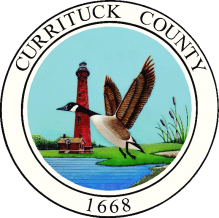There is no greater time to inspect your deck prior to having all your friends and family over for outdoor fun. We thought it would be beneficial to our homeowners to have a simple deck inspection guide that would help you recognize some potential hazards and maintenance issues that may need addressed.
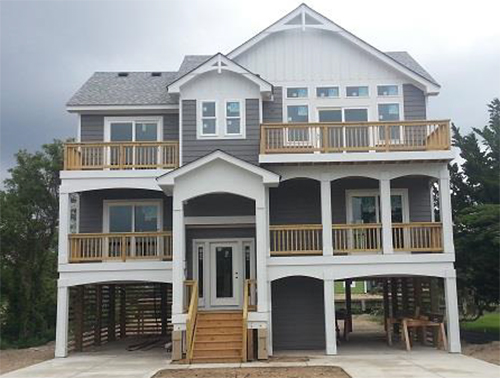

Checking your deck using this information does not constitute a code compliant deck. It is intended to assist homeowners to seek a professional such as a building contractor or licensed home inspector to get a deck evaluation.
Inspecting Your Deck
Here are some helpful tips when it comes to inspecting an existing deck for structural safety.
1. Investigate the deck support posts/pilings
Simply dig around the post/pilings and look for rot or bug damage. Also inspect the pile above ground for dry rot, cracking or splitting. A simple way to inspect for rot is to poke the wood with a screwdriver or ice pic. If you can easily penetrate ¼ – ½ inch, break off a sliver of wood without splinters, or the wood is soft and spongy, decay may be present. You should visually inspect all deck components (joists, girders, deck boards, guardrails and stairs).
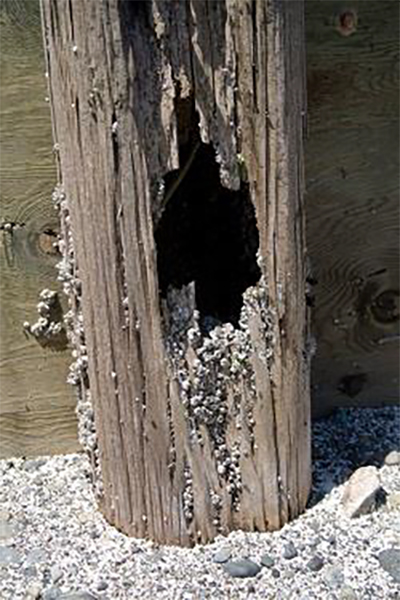
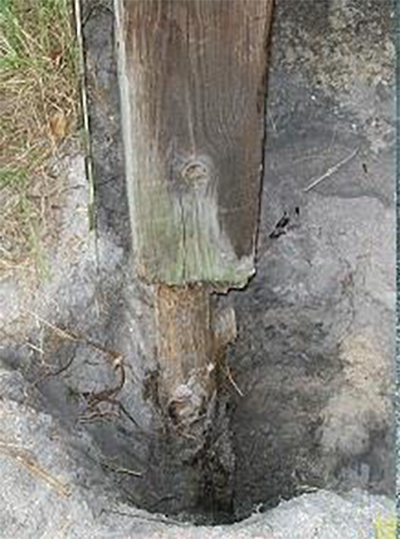
2. Deck attachment to house
The most common reason for deck collapses is improper attachment at the house. If the deck is supported by the house, it should be attached with 5/8 inch through bolts. Bolt spacing is based on joist span. Less than 8 foot joist span requires 5/8 inch through bolts at 42 inch on center spacing in the deck band. Greater than 8 foot joist span requires 5/8 inch through bolts at 20 inch on center spacing in the deck band. Be on the lookout for rusted nails and rusted through bolts.
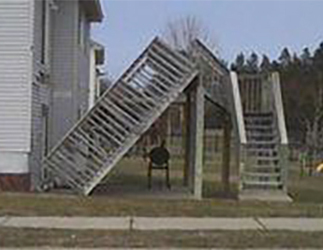
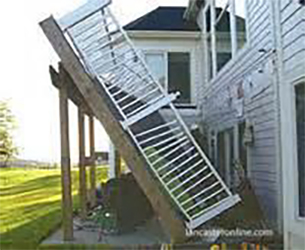
3. Check the flashing at the house
Improper flashing may lead to water infiltration and rot over time. It will eventually lead to structural issues. Flashing should run from top to bottom of deck band between the house and deck band. There should be counter flashing on the house that bends over deck band and joists. Then the house wrap would go over the counter flashing next. This can be hard to see after a deck is already built.
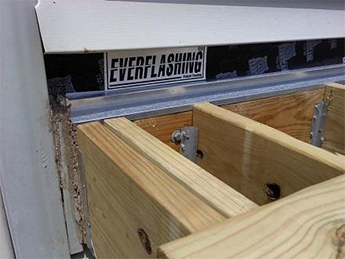
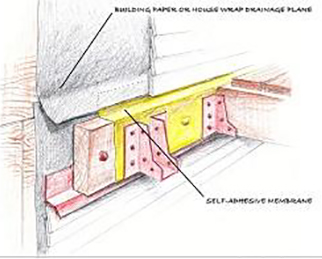
4. Proper joist support
Joists can be supported by either a ledger board or by joist hangers. Things to look for concerning joist hanger problems. Nails are supposed to be installed in every hole with proper nails. Most screws are not approved for joist installation. Joist hangers shouldn’t be bent or cut. Change rusted joist hangers. The joists should be seated fully in the joist hanger. A minimum 2 x 2 ledger with 3 – 16 d nails spaced 4” on center under each joist is the other method of supporting the joist.
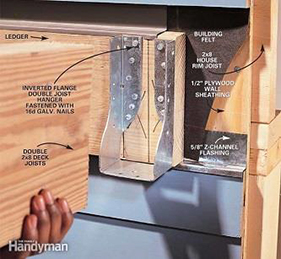
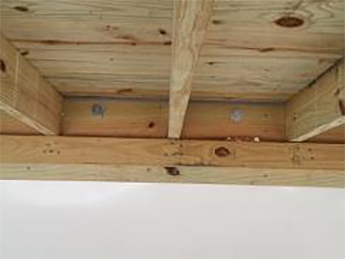
5. Joist spans
Over spanned joists are dangerous as well. Measure your joists and review the table below to see how your joists compare to today’s codes. Also keep in mind the age of your joists.
This table would be for deck joists with a 40 pound live load with a 10 pound dead load:
| Table 12 Wet-Service Floor Joists - 40 PSF Live Load, 10 PSF Dead Load, 360 Deflection | |||||||||||
| Size inches | Spacing inches on center | ||||||||||
| Visually Graded | Machine Stress Rated (MSR) | Machine Evaluated Lumber (MEL) | |||||||||
| DSS | No. 1 | No. 2 | No. 3 | 2400f-2.0E | 1650f-1.5E | 1500f-1.6E | M-14 (1800-1.7) | M-29 (1550-1.7) | M-12 (1600-1.6) |
||
| 2X6 | 12.0 | 11-0 | 10-4 | 9-11 | 8-2 | 11-2 | 10-2 | 10-4 | 10-7 | 10-7 | 10-4 |
| 16.0 | 10-0 | 9-5 | 9-0 | 7-1 | 10-2 | 9-2 | 9-5 | 9-7 | 9-7 | 9-5 | |
| 19.2 | 9.4 | 8-10 | 8-6 | 6-5 | 9-6 | 8-8 | 8-10 | 9-0 | 9-0 | 8-10 | |
| 24.0 | 8-8 | 8-2 | 7-7 | 5-9 | 8-10 | 8-0 | 8-3 | 8-5 | 8-5 | 8-3 | |
| 2X8 | 12.0 | 14-5 | 13-8 | 13-1 | 10-3 | 14-8 | 13-4 | 13-8 | 13-11 | 13-11 | 13-8 |
| 16.0 | 13-2 | 12-5 | 11-10 | 8-11 | 13-4 | 12-2 | 12-5 | 12-8 | 12-8 | 12-5 | |
| 19.2 | 12-4 | 11-7 | 10-10 | 8-2 | 12-7 | 11-5 | 11-6 | 11-11 | 11-11 | 11-8 | |
| 24.0 | 11-6 | 10-4 | 9-8 | 7-3 | 11-8 | 10-7 | 10-10 | 11-1 | 11-1 | 10-10 | |
| 2X10 | 12.0 | 18-5 | 17-5 | 16-2 | 12-6 | 18-9 | 17-0 | 17-5 | 17-9 | 17-9 | 17-5 |
| 16.0 | 16-9 | 15-10 | 14-0 | 10-10 | 17-0 | 15-6 | 15-10 | 16-2 | 16-2 | 15-10 | |
| 19.2 | 15-9 | 14-8 | 12-10 | 9-10 | 16-0 | 14-7 | 14-11 | 15-2 | 15-2 | 14-11 | |
| 24.0 | 14-8 | 13-1 | 11-5 | 8-10 | 14-11 | 13-6 | 13-10 | 14-1 | 14-1 | 13-10 | |
| 2X12 | 12.0 | 22-5 | 21-2 | 19-1 | 14-9 | 22-10 | 20-9 | 21-2 | 21-7 | 21-7 | 21-2 |
| 16.0 | 20-4 | 19-1 | 16-6 | 12-10 | 20-9 | 18-10 | 19-3 | 19-8 | 19-8 | 19-3 | |
| 19.2 | 19-2 | 17-5 | 15-1 | 11-8 | 19-6 | 17-9 | 18-1 | 18-6 | 18-6 | 18-1 | |
| 24.0 | 17-10 | 15.7 | 13-6 | 10-5 | 18-1 | 16-5 | 16-10 | 17-2 | 17-2 | 16-10 | |
6. Stairs and Guards
Check any guardrails or handrails to be sure they are firmly held in place. Check also the risers and stringers to be certain they are securely attached and not decayed. If the riser of the stair treads is open, this opening should not allow a 4” sphere to pass through. The horizontal stair run of the stairs should not exceed 7 feet without additional support. Also, always keep stair pathways clear of planters, décor, toys and other items that can present a tripping hazard.
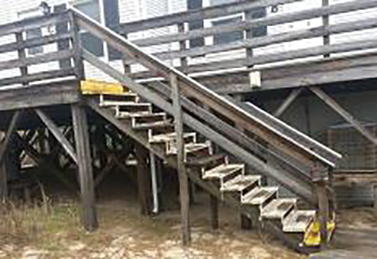
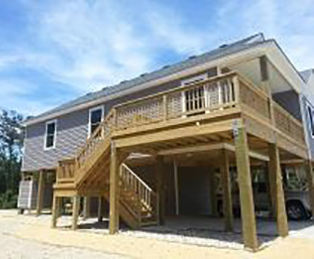
Guards and rails should be secure. This is especially important the higher your deck is off the ground. Maximum post spacing for the guardrail is 8 foot on center post to post with two 3/8 inch through bolts connecting to deck. Handrail height is 34 inch to 38 inch high measured vertically from a line connecting the leading edges of the stair tread. Guardrail height is a minimum 36 inches high above the deck walking surface. Vertical picket spacing shall not allow for a 4 inch sphere to pass through. Horizontal members in the guardrail assembly shall not allow for a 4 inch sphere to pass through. Required guards shall not have openings from the walking surface to the required guard height which allow passage of a 4 inch sphere.
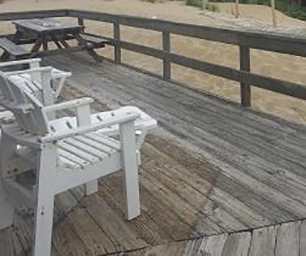
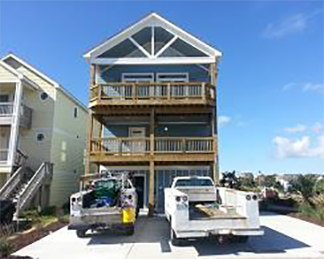
Other items to consider as it relates to the deck area
- If you have trees overhanging your deck, make certain there is no danger of decaying limbs breaking free and falling from trees surrounding the deck.
- Clean away any leaves and debris, since these can be slippery and promote mildew.
- If mildew is present or the deck coating has worn away, make time to clean and apply a new water proofing coating. It can help prevent the split, decayed wood and loosened fasteners mentioned earlier.
- Be sure all lighting is working; clean any light covers to allow maximum light to shine through, and trim any plants or tree limbs that may be blocking light.
- If you don’t have adequate lighting, there are a lot of great new deck lighting products you could consider to illuminate your steps and pathways.
- Be sure all electrical outlets are GFCI protected with the proper weather proof cover intact
- Test all outdoor furniture to be sure it is sturdy. Avoid placing seating right at the edge of the deck.
Helpful links for deck construction information
Appendix M of the 2012 North Carolina Residential Code available online at our website www.currituckgoverment.com or in our offices.
www.ncdoi.com
www.NADRA.org
Please Note that all components of a deck are structural and repair or replacement of deck components would require a building permit.
For more information, questions or concerns, please contact a building inspector at:
Mainland Office
252-232-3378
Richard Godsey
Ronald Schaecher
Sean Strydom
Corolla Office
252-453-8555
